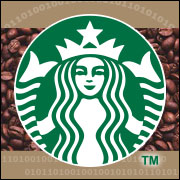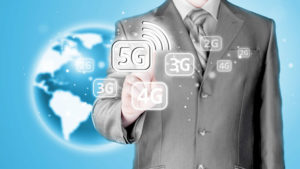
One fundamental element of building a brand relationship with customers is consistency. Widely franchised companies like Starbucks compromise consistency, however. They employ several different business models instead of sticking to one. This approach confuses customers and hurts the master brand, since customers never really know what to expect.
Because Starbucks uses different business models, depending on store locations, certain customers have become distrustful of the brand, which ultimately hurts the company.
Starbucks uses at least two different business models that I have seen, although there may be more. One model is for company-owned Starbucks stores. A different model is for franchises that are not owned by Starbucks, but by other companies, such as supermarkets or department stores.
There are Starbucks franchises inside Publix, Kroger, Target and Barnes & Noble stores. They show up in shopping mall booths, hotel lobbies and many other places — and I think there may be many different models within this slice of the pie.
The All-Important Customer Experience
Starbucks has been making a simple mistake. The experience the customer gets used to should be the same for every Starbucks-branded store. Period. Building a brand relationship with customers is key to success.
However, in Starbucks’ case, the rules seem to vary from one store to another — and that wiggle room for the franchise operator chips away at brand loyalty.
Let’s face it, customers don’t care about business models. What they care about is the experience. If they like a brand such as Starbucks, they want the same experience from store to store. They expect the same taste, choice, service quality, cleanliness and more. They expect it in every single store.
That builds a brand relationship. Satisfaction leads to long-term loyalty. When the customer experience is different from place to place, that cuts away at the brand.
My local Starbucks started out in a nearby Publix supermarket. It was a separate Starbucks business, but it was within the Publix store. It offered the full Starbucks experience.
Last year, Starbucks decided to buy a piece of property nearby and build its own store with a drive-through window. When the store moved from Publix, things suddenly changed.
Business increased several times over, which was great for the store. New customers loved it and kept coming back. However, that sudden growth altered the experience for longtime patrons of the original Starbucks store. The company didn’t seem to care about that problem, so the store at the new location no longer was recognizable as the friendly neighborhood Starbucks many had grown to love.
A year and a half later, Publix decided to open its own Starbucks in the original location. However, it was a franchise store — Publix owned it, not Starbucks. Many of the longtime customers who liked the original store have been visiting the franchise — that’s the good news.
You Can’t Go Home Again
However, the new Publix-franchised Starbucks has a few noticeable flaws that eat away at the otherwise strong brand relationship with loyal customers. They are small things, but they have been diluting the brand for the customer.
One, Starbucks has a frequent customer card, that rewards customers with free refills, free flavors added to the coffee, and other perks. However, the new Publix Starbucks does not offer those advantages, which hurts the Starbucks brand relationship with customers.
Two, customers can’t redeem their loyalty card points at the new franchise. This means customers must go elsewhere to redeem their points.
Three, the high-speed WiFi connectivity available in every Starbucks store doesn’t work well in Publix. It is often down or does not work reliably. This can be fixed, but the question is, will it?
These differences and more can make customers feel like they are in a Starbucks in a different dimension. The name is there, the coffee is there, but certain things are different or missing.
Lesson for Retailers
This is Starbucks’ mistake: After spending a great deal of time and money building a strong brand relationship with customers, it has been allowing it to get watered down and weakened by franchises bearing the corporate name.
Retail stores may be able to choose the model they want, but there is a price for choosing poorly. That price can be significant for retailers like Publix, Kroger, Target and many others. It can have a negative impact on Starbucks itself. Customers who use the company’s loyalty programs certainly must pay a price.
Companies should work hard to avoid disappointing their customers. Period. That’s especially true when it something as simple and important as a loyalty program — something that is set up to improve the customer experience and build a strong relationship.
Lack of consistency hurts valuable brand relationships. That is something every company should be very aware of. If they do nothing to combat it, brand erosion could become painful. Customers notice, and they do remember.
























































Great article. When it comes to customer service one doesn’t often think about how the small differences between a store owned by the head company and a store owned by a different company will change the customer experience.